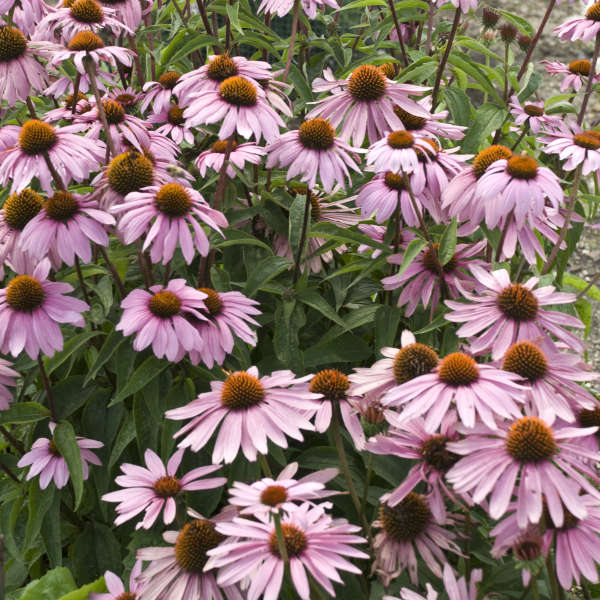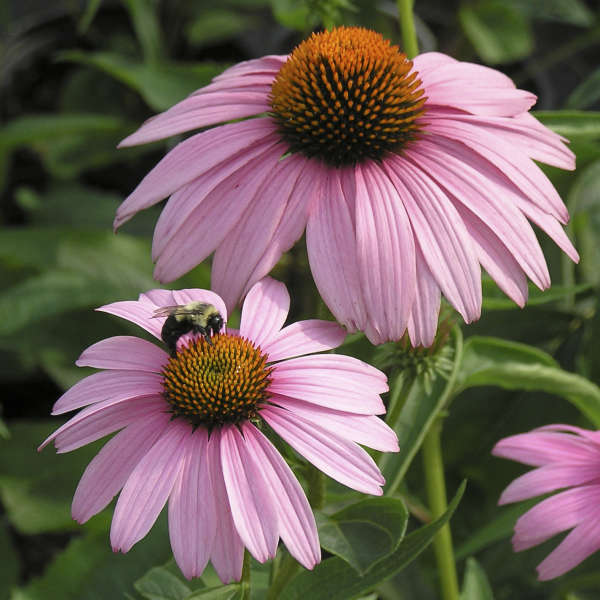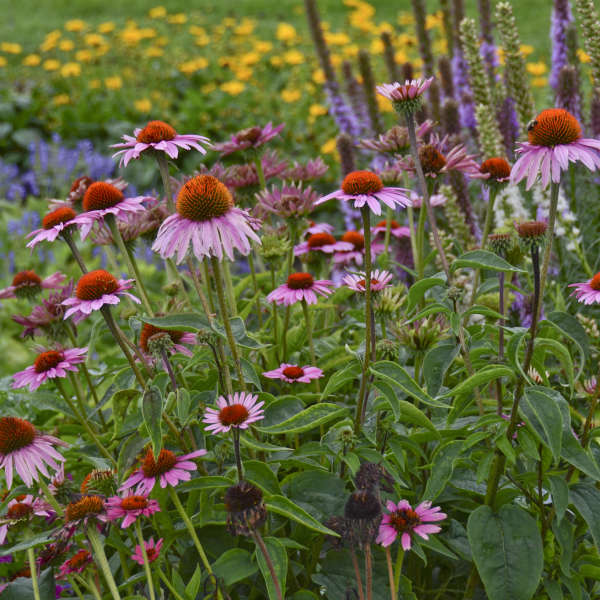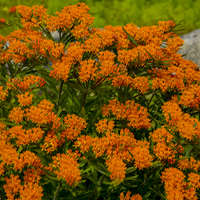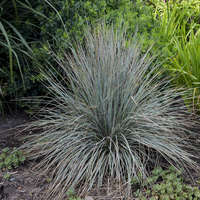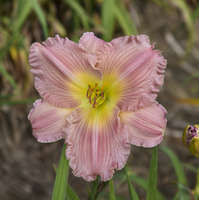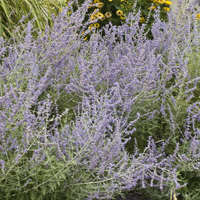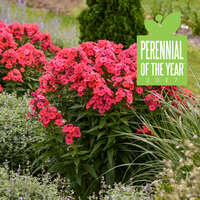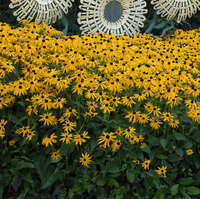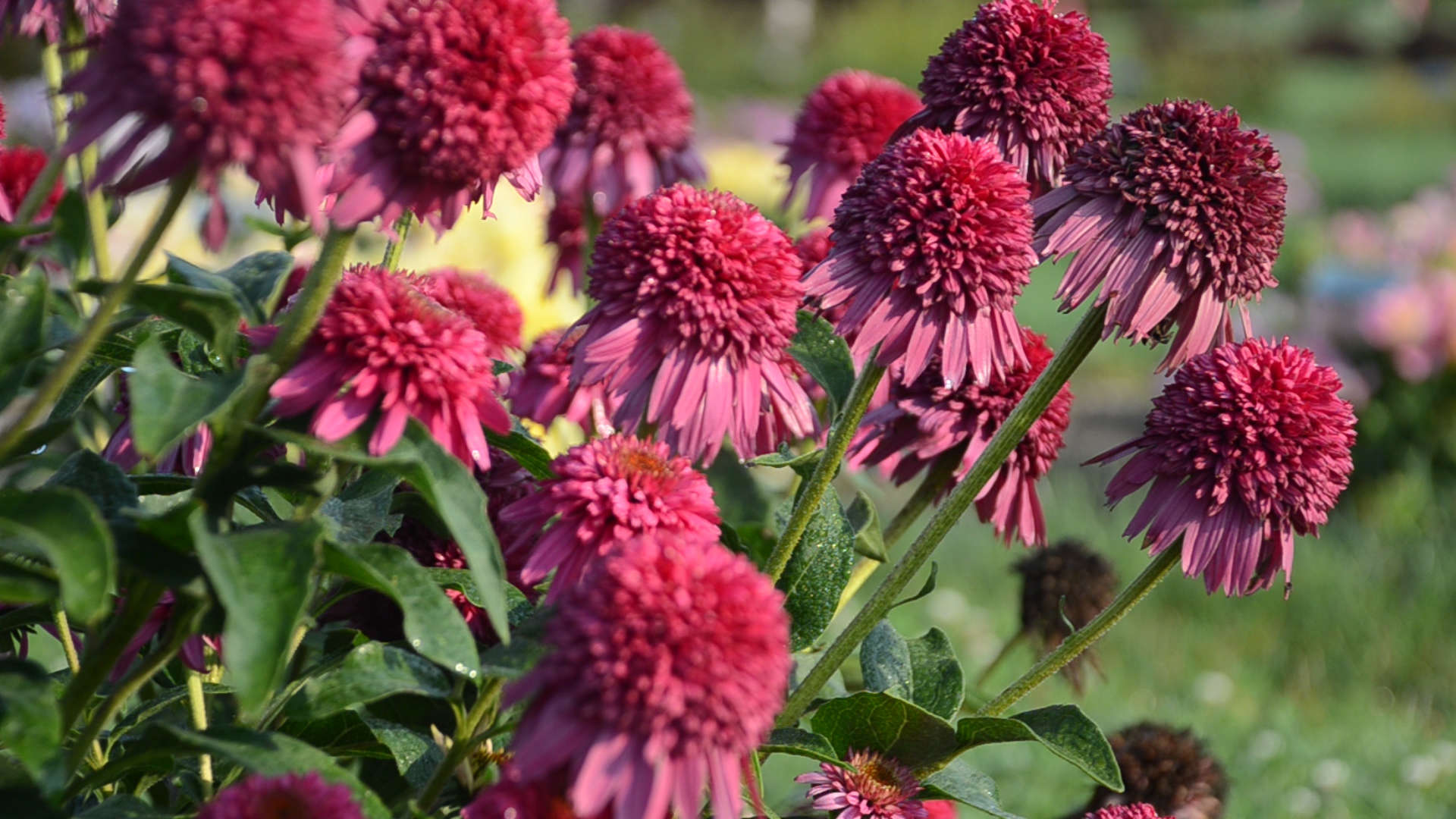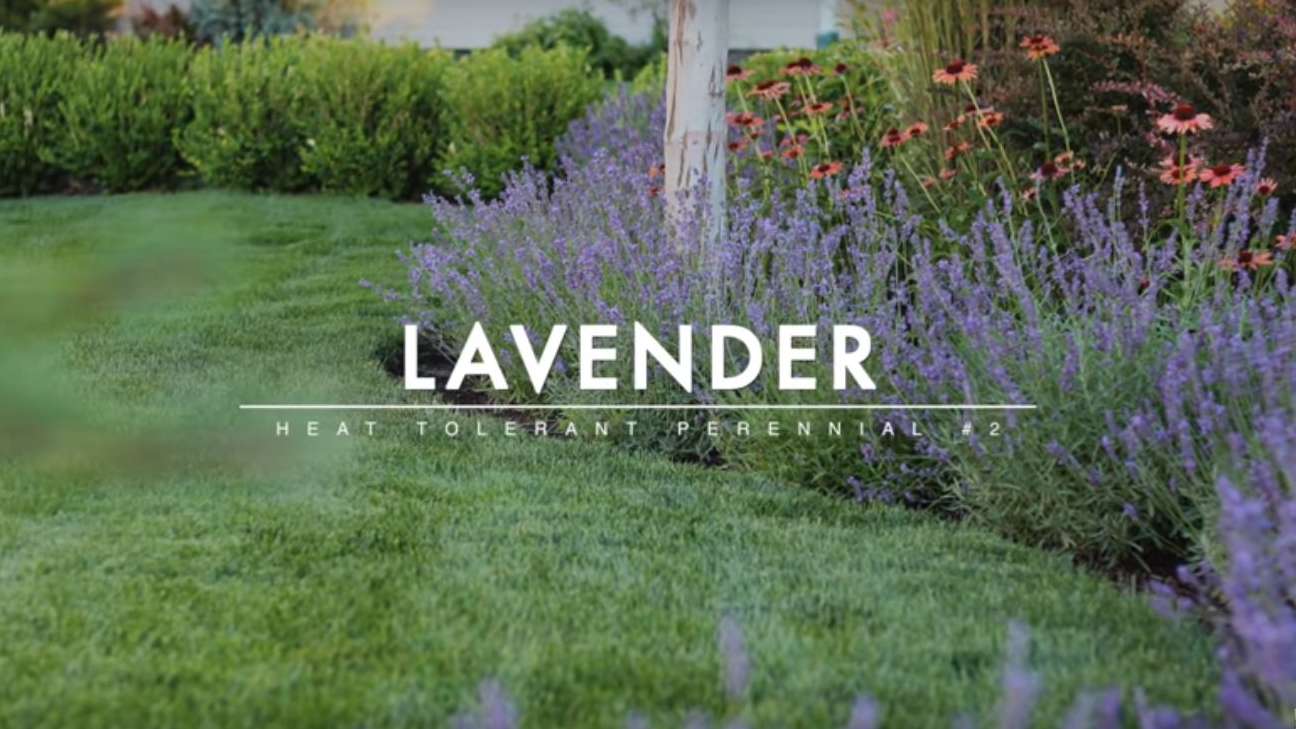Echinacea purpurea 'Magnus'
Common Name: Purple Coneflower
The classic purple coneflower. Beautiful rose pink ray petals with a coppery brown, spiky central cone. Petals are held horizontally, making the flowers appear even bigger. Newer blooms are more intense in color and lighten to pale rose as they age, lending a bicolor effect to the entire clump of Echinacea.
Praised for their large, daisy-like flowers which appear from midsummer thru fall, after many other perennials have finished blooming, Coneflowers are a mainstay in today's garden. If deadheaded, the bloom cycle will be extended. However, some spent blooms should be left on the plants in fall because their seeds provide winter food for finches and other birds. The dried seed heads also provide architectural interest in the winter.
